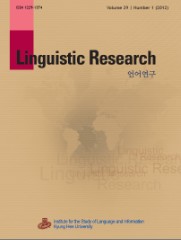This paper investigates number in the nominal domain with a particular focus on Korean. English is well-known to show singular-plural number contrast unlike Korean that shows number neutral-plural contrast. Recent studies, however, have suggested that Korean has singular-plural number contrast in a certain context, namely definite context. This paper proposes that in Korean singular and plural nominals in definite contexts do not have the same structures as indefinite contexts. In a definite context, a plural nominal has a full DP structure with NumP similar to a singular nominal. In an indefinite context, on the other hand, a plural nominal has a modifying plural unlike a singular nominal with a bare nP. The proposed structures form a basis for the semantic account, i.e., the syntactic-complexity-based competition for number in Katzir (2007) adopted for Western Armenian. Assuming this syntax-based semantic account for Korean, it is shown that the different number contrasts in the two different contexts are natural consequences of the singular-plural competition. The proposed syntactic and semantic accounts for Korean suggest that a language like Korean may have two two-way number contrasts, not one two-way contrast (e.g., as in English) suggested in previous literature. This paper shows that the two two-way number contrasts are not a cross-linguistically rare phenomenon as originally suggested in the literature but possible in various languages such as Blackfoot (Algonquian), Western Armenian, and Mandarin, and so on.
1. Introduction
2. Number in (in)definite contexts in Western Armenian
3. The analysis: Number in (in)definiteness in Korean
4. Consequences for typology of number contrast
5. Conclusion
References
